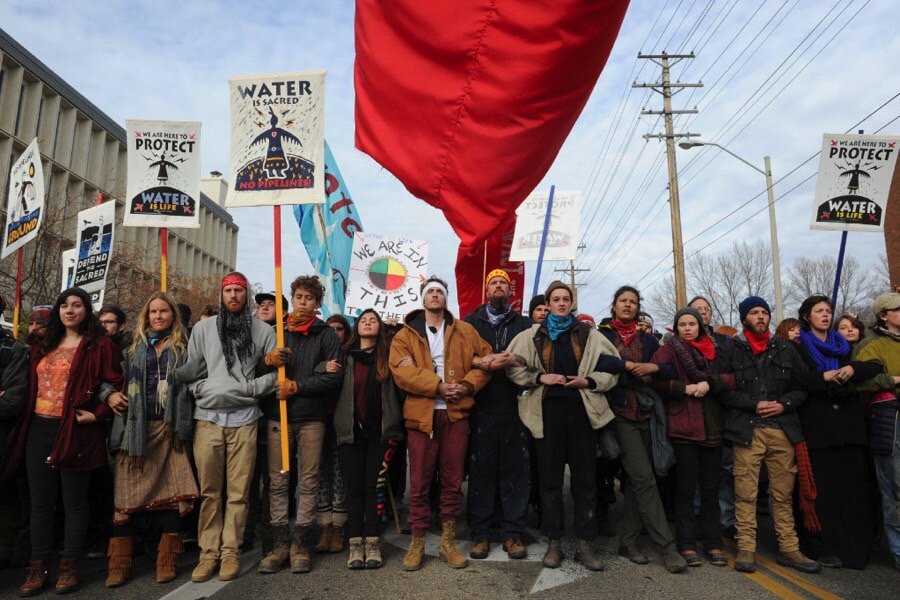US Army Corps of Engineers delays Dakota Access pipeline project
Loading...
“Additional discussion and analysis” are necessary before the US Army Corps of Engineers can make a decision about whether to let construction proceed on the Dakota Access pipeline, the Army said on Monday.
Following protests by the Standing Rock Sioux tribe and their supporters, the Obama administration halted construction on the pipeline in September to review the permits for part of the pipeline that passes under Lake Oahe, a sacred site for the tribe. On Monday, the government concluded that review, and announced that construction would remain suspended while the government and Standing Rock Sioux discussed ways to reduce spill risks and protect the tribe’s water supplies.
Given the dispossession historically faced by the Great Sioux Nation, making the right judgment in this case is important, the government said. The delay is intended to give the government time to address the Standing Rock Sioux tribe’s concerns. But pipeline backers are becoming increasingly impatient, saying the latest delay lacks legal justification.
“This action is motivated purely by politics at the expense of a company that has done nothing but play by the rules it was given,” said Kelcy Warren, the chief executive of Energy Transfer Partners, which is building the pipeline, in a statement.
The Dakota Access pipeline route stretches for more than 1,000 miles, and was designed to carry oil from the Bakken shale fields to the Gulf of Mexico, via Illinois. Proponents say the pipeline is a safer, cheaper alternative to existing transit options that would help reduce overcrowding on those routes.
The delay has created uncertainty about future infrastructure projects, and left many in North Dakota’s shale industry concerned about their jobs.
Over the past year, the pipeline has faced opposition from the Standing Rock Sioux tribe, who say the part of the pipeline intended to pass under Lake Oahe threatens their sacred sites, while an oil spill could jeopardize their water supply and economic security.
The original plan had routed the pipeline across the Missouri River, raising concerns that the drinking water of Bismarck, North Dakota’s capital city, could be contaminated. For the Standing Rock Sioux, the reroute is part of the discrimination historically faced by native Americans.
“The problem we have – and this is a long history of problems that evolved over time – is where the federal government or corporations take advantage of indigenous lands and indigenous rights,” Standing Rock Sioux Chairman David Archambault II told CNN in October.
Protection of tribal lands has contributed to a revitalization of culturally inspired activism within native American communities, fueling support for halting construction on the pipeline.
The US Army Corps of Engineers may hope that planned discussions with the Standing Rock Sioux tribe will help bridge the growing divide between the two sides. They intend to discuss ways to prevent spills, address spills, and protect tribal waters, they said in a statement.
More than 200 anti-pipeline protests have been planned for Tuesday, “to elevate the issue and … encourage the Army Corps to exert its power to stop this pipeline,” Dallas Goldtooth, a spokesman for Indigenous Environmental Network, which is participating in the protests, told Reuters.
President-elect Donald Trump has expressed support for pipeline projects, though he has not specifically commented on the Dakota Access pipeline.
Material from Reuters contributed to this report.






